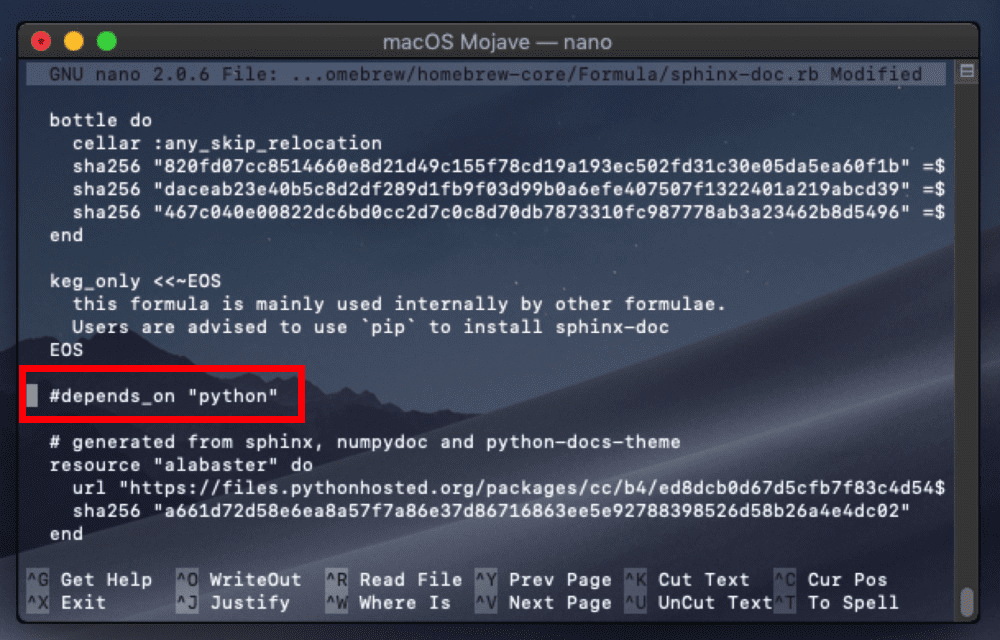

- #Install pip for mac via homebrew how to
- #Install pip for mac via homebrew mac os x
- #Install pip for mac via homebrew install
- #Install pip for mac via homebrew software
- #Install pip for mac via homebrew password
#Install pip for mac via homebrew install
Update: If doing all the stuff below doesn’t seem like your cup of tea, it’s also possible to install Python, NumPy, SciPy, and matplotlib using double-click binary installers (resulting in a much less flexible installation), see this post to learn how. On Snow Leopard you won’t install Xcode via the App Store, you’ll have to download it from Apple.Īfter I’d helped my friend I found this blog post describing a procedure pretty much the same as below. These instructions are for Lion but should work on Snow Leopard or Mountain Lion without much trouble.
#Install pip for mac via homebrew mac os x
See the “Install Python” page for the most recent instructions.Ī bit ago a friend and I both had fresh Mac OS X Lion installs so I helped him set up his computers with a scientific Python setup and did mine at the same time. Update: These instructions are over a year old, though they may still work for you.
#Install pip for mac via homebrew how to
You can now continue with our getting started with Python guide to learn how to setup an IDE to write Python in. Hopefully, by now, you will have Python up and running on your Mac device. If Python has been successfully installed, then you should see a version string like what we have below appear in your terminal. This command will get Python 3 to return its version number. Within this terminal session, go ahead and run the following command. To verify that Python is installed on your macOS device, you will need to start by opening up a terminal session.Ģ. In our next section, we will quickly run through the steps to verifying that Python is now installed. It will also install any dependencies that Python may require.

Homebrew will automatically download and set up the latest version of Python on your macOS device. This simple command will download and install both Python and Python’s package manager “pip” to the operating system. Within this terminal application, we need to enter the following command. To get started, you need to first to open up the terminal application.Ģ.
#Install pip for mac via homebrew software
This section will show you how to make use of homebrew to install Python to your Mac device.ĭon’t worry, this is incredibly simple, thanks to the homebrew software we installed in the previous steps.ġ. Now we are onto the seccond last section of our guide. Once homebrew has finished installing, you can now finally proceed to install Python. Please note that this process can take some time.Ĥ. This command will run a ruby script that will install homebrew and all its dependencies to your macOS system. Now with the terminal open, you need to enter the following command. Within this folder, open the terminal by double-clicking “ Terminal“.ģ. Within here you will find a folder called “ Utilities” ( 2.), open it to proceed.Ģ. To do this, you must first open up the “ Finder” application and open up the “ Applications” ( 1.) folder. You can either open this by pressing COMMAND + T or by following the next couple of steps to open up the terminal application. To install homebrew, we will need to first to load up the terminal. This package manager allows us to install things like Python and wget in an easy way on macOS.ġ. For those who do not know what homebrew is, it is a package manager for macOS. Once the installation process has completed, you can now move on to setting up homebrew on macOS.

#Install pip for mac via homebrew password
You will be asked to enter your Apple ID’s password for the installation to proceed. Within here, search for “ xcode” ( 1.) within the search box, then click “ Get” ( 2.) to install it to your operating system. Begin by opening up the “ App Store” on your Mac device. There are a few different methods for getting the GCC compiler on to your macOS installation, but we will be going down the Xcode route as it is the simplest one.ġ. The first of these steps is to install Xcode on our device so that we can make use of the GCC compiler. If you already have Xcode and homebrew installed to your Mac, then you can skip to the “ Installing Python using Homebrew ” section of this tutorial. To install Python easily we will require a piece of software called homebrew as well as the compiler GCC, which we will get by installing Xcode. Installing Python on macOS requires us to go through a few different steps. In this guide, we will be showing you how to install Python to macOS using the homebrew software.


 0 kommentar(er)
0 kommentar(er)
